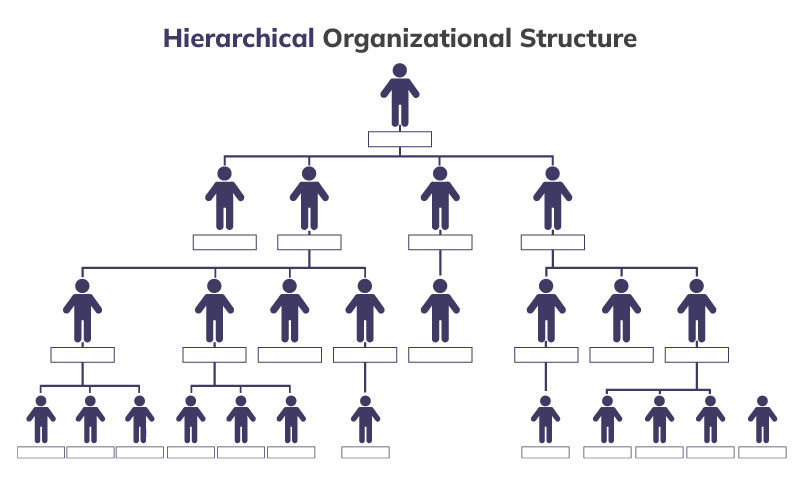Modern Organizational Structures: Origins, Applications, and Agile Synergy with Kaizen
- Mzukisi Qunta
- Dec 8, 2024
- 4 min read
Organograms, or organizational charts, are visual tools representing an organization’s structure, roles, and reporting relationships. Over time, these frameworks have evolved from rigid hierarchies to flexible, dynamic designs that align with the complexities of modern work environments, including remote and hybrid work. This article delves into the historical and theoretical foundations of organograms, explores their contemporary adaptations, and highlights the synergy between agile organograms, Kaizen principles, and organizational archetypes.

The Origins of Organograms
Organograms have their roots in the early industrial era, specifically in the 19th century when businesses sought efficient ways to manage growing workforces. Daniel McCallum, a railroad manager, is often credited with designing the first known organizational chart in 1855. This chart displayed a hierarchical structure to streamline communication and decision-making.
Theories that influenced the development of organograms include:
Scientific Management (Frederick Taylor, 1911): Advocated for task specialization and hierarchical oversight.
Bureaucratic Management (Max Weber, early 1900s): Emphasized clear roles, rules, and hierarchical authority.
Human Relations Theory (Elton Mayo, 1930s): Acknowledged the importance of employee collaboration and motivation within structured environments.
While these early models prioritized control and efficiency, modern organograms emphasize flexibility and adaptability, better suited for today’s dynamic business challenges.
Types of Organograms
Several organogram types are utilized in contemporary organizations, each offering distinct advantages depending on organizational needs:
Hierarchical Organogram
Definition: Displays a top-down structure where authority flows from senior management to junior employees.
Application: Common in traditional industries like manufacturing or government.
Advantages: Clear roles, accountability, and streamlined decision-making.
Challenges: Can stifle innovation and slow adaptability in remote or hybrid settings.

Flat Organogram
Definition: Reduces management layers to foster autonomy and collaboration.
Application: Popular in startups and agile organizations.
Advantages: Empowers employees and speeds decision-making.
Challenges: May lack clear leadership, leading to confusion in large teams.

Matrix Organogram
Definition: Employees report to multiple managers across functional and project teams.
Application: Ideal for complex, cross-functional collaboration.
Advantages: Encourages resource sharing and expertise across departments.
Challenges: Dual reporting lines can create ambiguity and conflict.

Network-Based Organogram
Definition: Represents organizations as interconnected nodes based on workflows and expertise rather than hierarchy.
Application: Fits remote teams collaborating across time zones.
Advantages: Promotes collaboration and knowledge sharing.
Challenges: Difficult to maintain clear accountability.

Agile Organogram
Definition: Focuses on adaptability and customer-centric workflows with small, self-managing teams.
Application: Best for industries requiring rapid innovation, such as tech or creative sectors.
Advantages: Responds quickly to change and fosters continuous improvement.
Challenges: Requires high levels of trust and communication.


Holacracy
Definition: Decentralized, self-governing teams operating within defined “circles.”
Application: Suited for organizations embracing distributed decision-making.
Advantages: Eliminates micromanagement and empowers individuals.
Challenges: Can be challenging to implement in traditional cultures.

Virtual Organogram
Definition: Designed for distributed teams connected digitally.
Application: Perfect for global teams in remote or hybrid setups.
Advantages: Reflects the reality of modern work where geography is irrelevant.
Challenges: Relies heavily on digital infrastructure.
Agile Organograms and Kaizen: A Synergistic Framework
Agile organograms reflect the principles of adaptability and collaboration, which align seamlessly with Kaizen—a Japanese philosophy focused on continuous improvement. Both frameworks emphasize iterative progress, teamwork, and responsiveness to change.
Key Synergies:
Decentralized Decision-Making:
Agile organograms empower teams to make decisions autonomously, reflecting Kaizen’s emphasis on involving all employees in improvement efforts.
Example: A software development company like Atlassian forms self-organizing teams to implement customer feedback quickly.
Continuous Feedback Loops:
Agile frameworks encourage frequent feedback through sprints or iterative reviews, echoing Kaizen’s PDCA (Plan-Do-Check-Act) cycle.
Example: Engineering firms use BIM (Building Information Modeling) to iterate designs in real-time.
Collaboration Over Competition:
Agile organograms prioritize cross-functional teamwork, a hallmark of Kaizen culture.
Example: Tesla integrates cross-departmental collaboration to accelerate product innovation.
Remote Work and Modern Organograms
The rise of remote and hybrid work has necessitated structural adaptations in how organograms are designed and used. Digital tools like Microsoft Teams, Miro, and Asana enable virtual organizations to visualize roles and connections effectively.
How Organograms Adapt to Remote Work:
Dynamic Role Mapping: Remote teams use digital organograms to show shifting responsibilities in real time.
Collaboration Across Boundaries: Network-based and agile models thrive in virtual environments where workflows transcend traditional hierarchies.
Cultural Integration: Modern organograms reflect an organization’s values by fostering inclusivity and employee empowerment, critical for remote work success.
Archetypes and Organizational Adaptability
Organizational archetypes, as outlined by Charles Handy and others, represent recurring patterns in structures and cultures. Examples include:
The Club Culture (Power-Based): Centralized leadership and informal networks.
The Role Culture (Bureaucratic): Clear roles and processes.
The Task Culture (Project-Based): Teams form and dissolve based on project needs.
The Person Culture: Individual expertise drives decisions.
How Agile Organograms Align with Archetypes:
Agile structures often align with the task culture archetype, emphasizing flexibility and collaboration. By shifting archetypes, organizations can address challenges such as decline or stagnation. For example:
Failure to Adapt: Kodak’s inability to shift from a bureaucratic role culture contributed to its downfall in the digital era.
Success through Adaptation: Microsoft transitioned from a hierarchical culture to a more collaborative, agile structure under CEO Satya Nadella, revitalizing its growth.
Conclusion
Modern organograms are not just structural tools but strategic frameworks that enable organizations to navigate the complexities of today’s work environment. Agile organograms, in particular, embody the principles of flexibility, collaboration, and continuous improvement, making them ideal for remote work and innovation-driven industries.
When paired with Kaizen principles and informed by organizational archetypes, agile organograms create a powerful framework for sustainable growth. By understanding and applying these models, organizations can build resilient structures capable of thriving in dynamic markets.
References
Griffin, R. W., & Moorhead, G. (2014). Organizational behavior: Managing people and organizations. Cengage Learning.
Jeston, J., & Nelis, J. (2014). Business process management. Routledge.
Laloux, F. (2014). Reinventing organizations: A guide to creating organizations inspired by the next stage of human consciousness. Nelson Parker.
Ohno, T. (1988). Toyota production system: Beyond large-scale production. Productivity Press.
Sinek, S. (2009). Start with why: How great leaders inspire everyone to take action. Portfolio.




Comments